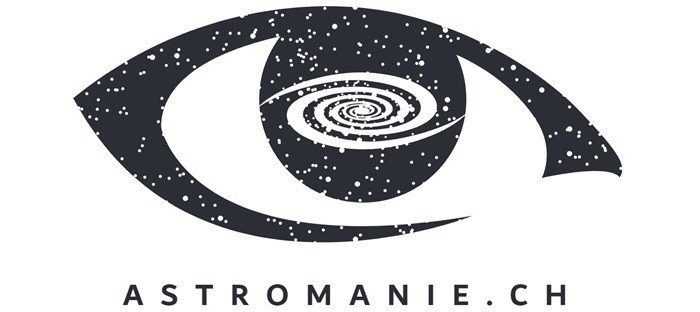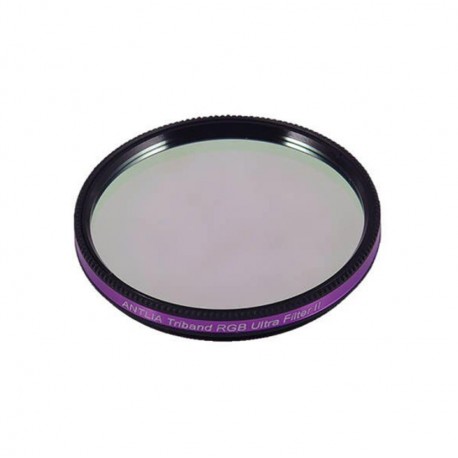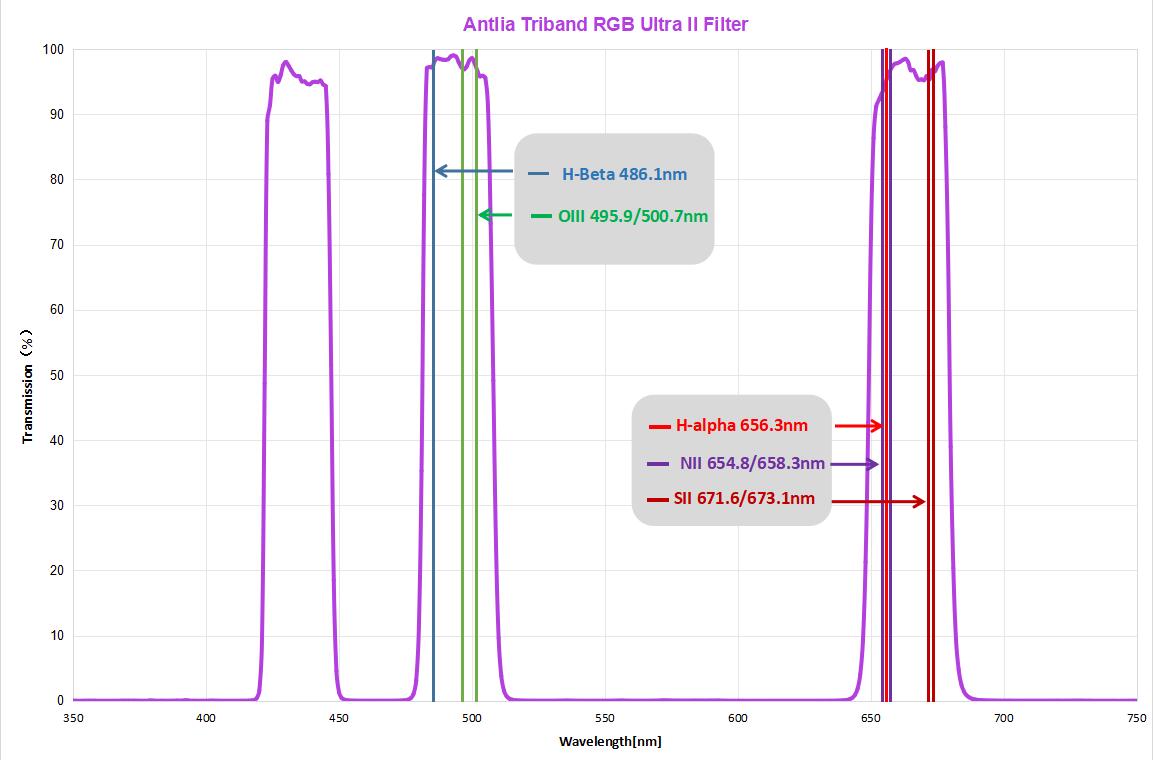Cart
0
Product
Products
(empty)
No products
To be determined
Shipping
0.00 CHF
Tax
0.00 CHF
Total
Prices are tax included
Product successfully added to your shopping cart
Quantity
Total
There are 0 items in your cart.
There is 1 item in your cart.
Total products
(tax incl.)
Total shipping (tax incl.)
To be determined
Tax
0.00 CHF
Total
(tax incl.)
Antlia Triband RGB Ultra II Filter 2"
ANTLIA TRIBAND RVB 50.8
New product
Antlia Triband RGB Ultra II Filter 2"
3 Items
Available.
More info
Specifications :
| Bande spectrale | Longueur d’onde | Transmission maximale |
|---|---|---|
| H-alpha | 656,3 nm | > 92 % |
| NII | 658,3 nm et 654,8 nm | > 92 % |
| S-II | 671,6 nm et 673,1 nm | > 92 % |
| O-III | 495,9 nm et 500,7 nm | > 92 % |
| H-bêta | 486,1 nm | > 92 % |
Spectral Curve:
Available size: 2’’ mounted





